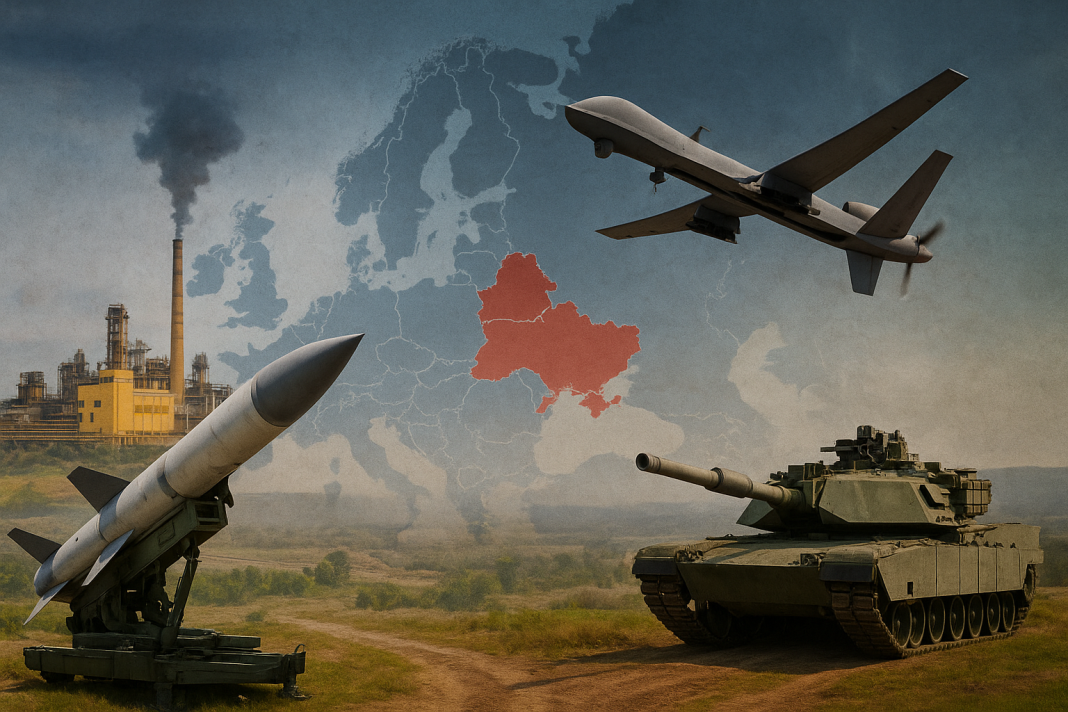Ukraine’s Defense Ministry’s Directorate of Intelligence, known as GUR, has shared a major update on Russia’s defense industry. It released information about Technodynamika Holding, a large Russian defense group operating under Rostec, the state-owned defense corporation.
According to the GUR, 145 enterprises are part of or managed by this holding. However, 86 of these companies remain outside international sanctions, even though they play crucial roles in military manufacturing — including the production of X-101 missile components.
GUR Reveals 86 Firms Linked to X-101 Missile Production Still Unpunished
The GUR made this information public through the War & Sanctions portal, which tracks entities connected to Russia’s military sector. The report states that Technodynamika actively produces weapons and technology for a long-range cruise missile frequently used in Russian military operations.
Ukrainian intelligence reports that Technodynamika’s enterprises manufacture artillery systems, rocket and cannon components, ammunition, gunpowder, and explosives. These enterprises also use many of these materials to produce launch systems and engines compatible with these missiles. The GUR emphasizes that these factories form a vast supply chain that sustains the Russian military-industrial complex.
📜 Patriots in, sledgehammer sanctions next: Trump’s Ukraine strategy shifts into overdrive
Even though Technodynamika holds such a vital role, Western nations have not yet sanctioned a large portion of its enterprises. This means that several producers of missile components and similar weapons are still able to function and possibly access materials and technology through indirect routes.
Factories Behind X-101 Missile Components Identified by GUR
In its new findings, the GUR identified several Russian enterprises that play a key role in the X-101 missile program and other missile systems. These factories operate within Technodynamika’s industrial network and develop and assemble some of the most important components of the X-101 missile.
One notable example in the report is the Ufa Aggregate Production Association, which manufactures key parts for the X 101 and X-59M2 / X-59M2A missiles. These components ensure the operation and accuracy of Russia’s long-range cruise missile systems. The GUR emphasized that, despite its crucial role in supporting the X-101 missile system, coalition countries have not yet sanctioned this company.
EU sanctions in crisis as Austria prioritizes bank losses over Russia pressure
The intelligence data also spotlights other companies producing weapons that support or incorporate technologies similar to those in the X-101 missile:
- JSC Federal Center for Dual Technologies ‘Soyuz’ and JSC Morozov Plant develop engines and solid fuel for Topol-M, Yars, and Iskander missile systems, and their technology can also support X-101 missile propulsion systems.
- The GUR identified JSC Leningrad Mechanical Plant and JSC Machine-building Plant “Shtamp” as key contributors to Russia’s missile production. The first produces specialized metals used in X-101 missile casings, while the second makes parts for Grad and Tornado-G systems and components linked to X-101 missile equipment.
Both companies also help maintain Tu-95MS and Tu-160 bombers, which launch X-101 missiles. GUR noted that these firms remain outside sanctions, allowing them to keep supporting X-101 missile production and other advanced weapon programs.
Published Data Exposes Network and Sanction Gaps
The GUR’s intelligence data provides insight into how the missile supply chain functions within Russia’s defense industry. The report lists each enterprise’s role under Technodynamika and its connection to Rostec, showing how components are sourced, developed, and integrated into wider missile production.
War by algorithm: Ukraine turns to drones and data to counter Russia’s military machine
Despite their involvement in missile production, many of these enterprises remain outside international sanctions. Technodynamika produces missile launchers, engines, UAVs, armor plates, and aviation simulators, all vital for long-range air missions.
The findings link this network to earlier reports revealing foreign technology used by Russian manufacturers like Uralvagonzavod. Together, they expose how 86 unsanctioned enterprises continue supporting missile operations, highlighting major gaps in the global sanctions system.
